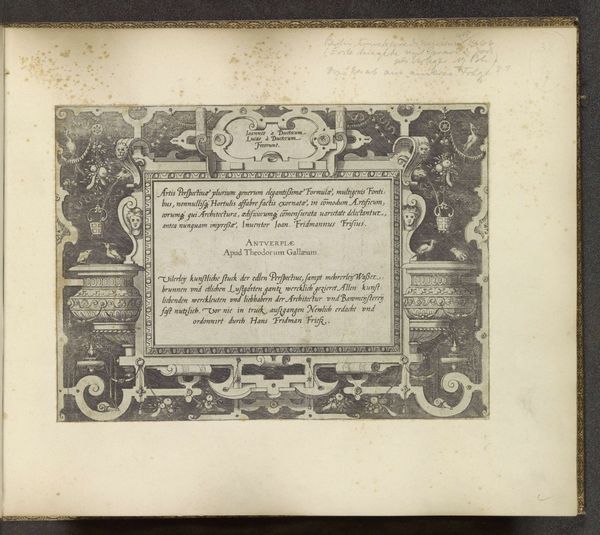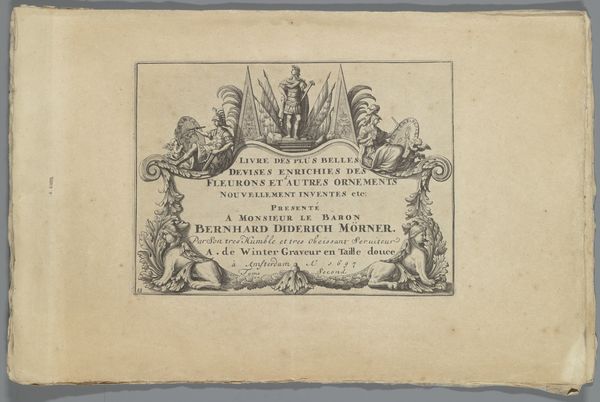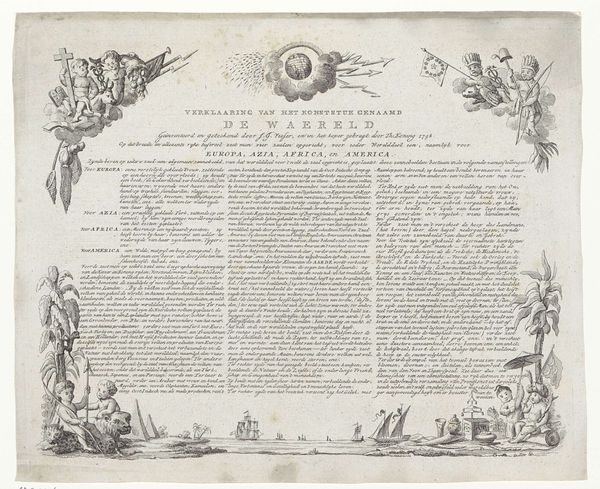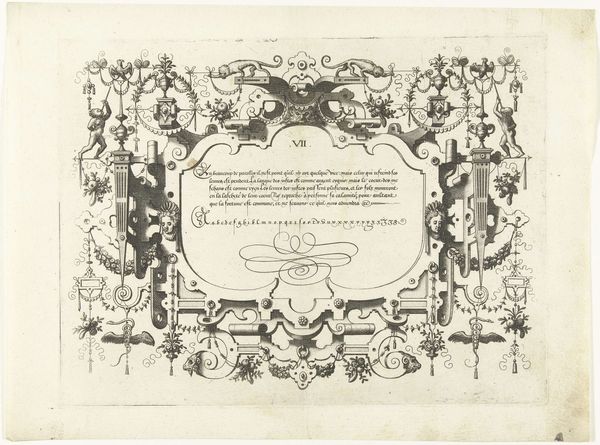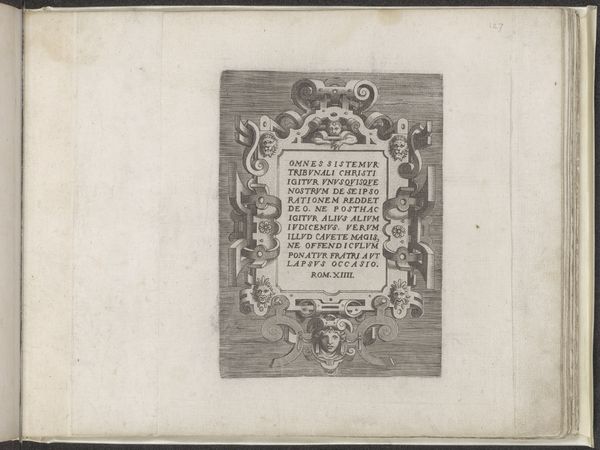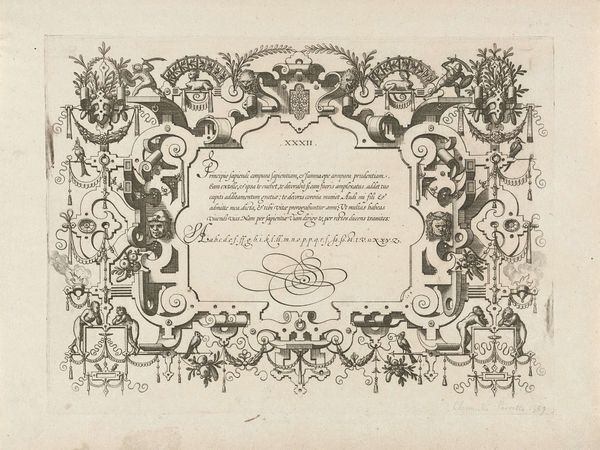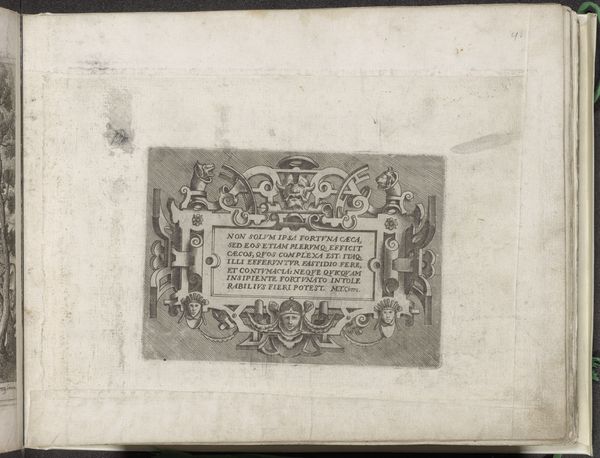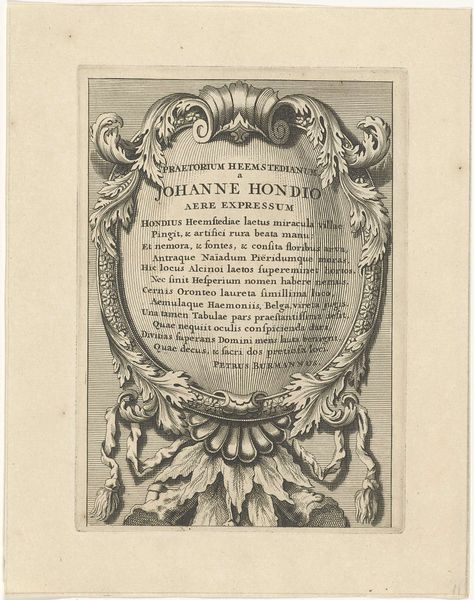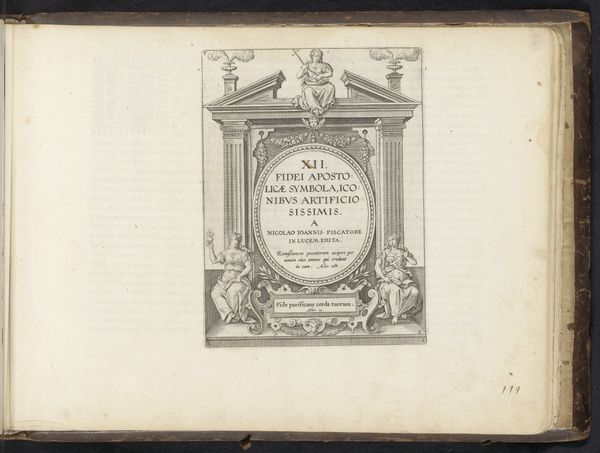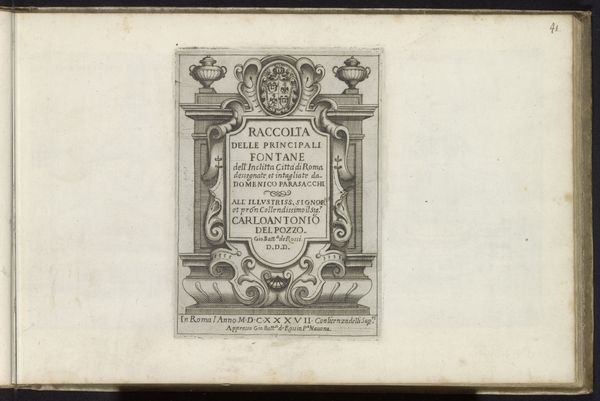
Frontispiece for "Drawings of the war, siege, and assault of the Turkish army on the island of Malta" (Disegni della guerra, assedio et assalti dati dell'armata turchesca all'isola di Malta) 1631
0:00
0:00
drawing, print, etching, paper, ink, engraving
#
drawing
#
aged paper
#
toned paper
#
narrative-art
#
baroque
# print
#
etching
#
sketch book
#
paper
#
personal sketchbook
#
ink
#
ink colored
#
pen work
#
sketchbook drawing
#
watercolour illustration
#
history-painting
#
sketchbook art
#
engraving
#
watercolor
Dimensions: Plate: 12 13/16 × 17 3/8 in. (32.6 × 44.1 cm) Sheet: 15 9/16 × 19 15/16 in. (39.5 × 50.7 cm)
Copyright: Public Domain
Curator: Oh, this print! It hums with a story. It's the frontispiece for "Drawings of the war, siege, and assault of the Turkish army on the island of Malta" by Antonio Francesco Luccini, dating back to 1631. It practically throws you into the heat of that conflict, doesn’t it? Editor: Absolutely! My first impression is intricate—a dense tableau of symbols and text wrestling for attention on a textured plane of aged paper. The weight of history feels almost palpable; one can feel the ink resting heavily on it, yet somewhat chaotic, even cluttered. Curator: Chaotic, perhaps. The Baroque style leans into drama. Luccini’s choice of etching and engraving—the linework has a vital nervousness to it. I read it more as energetic—capturing a feeling. You can practically hear the clamor of battle and the artist showing every scratch on his printing plate! It reminds us about the hand in this print more than say, steel engraving would have. Editor: True, there's a tactile quality to the engraving itself, the cross-hatching providing depth, almost modeling form as much as illustrating it. I'm drawn to consider how the act of its production speaks to power. Prints like this weren’t just art; they were propaganda tools. Replicated to disseminate a specific narrative of that war and bolster support for Malta's defense and for the Knights Hospitalier. Curator: A strategic maneuver crafted by someone who understands that to be creative is also an undertaking that shapes the materials and shapes the way you look at things, too! Notice the symbolic figures flanking the central title? You’ve got the armored warrior embodying military might set against the woman bearing the laurel—suggesting a potential or desired triumph over the besieging Turks. Luccini is playing to deeply felt hopes of European patrons to continue holding back the East. Editor: Indeed. Luccini worked in Rome during this era. It’s vital we understand his patrons—who are commissioning the images, controlling the materials and dictating content to be created. This wasn't purely about artistic expression, and even less, reportage. But about constructing a very specific image of the siege for strategic advantage. The material reality— the printmaking process becomes the means to a calculated end. Curator: And so the alchemy begins. The image transforms from simple lines on paper to the embodiment of power—a potent visual claim with layers that peel back in new and wondrous ways with time! I see those old conflicts, those choices with materials like ink and the press used— and feel something living within still. Editor: It’s certainly a lens to explore war in the Early Modern world, yes. One carefully constructed—literally—through deliberate application of ink, skill, and power.
Comments
No comments
Be the first to comment and join the conversation on the ultimate creative platform.
